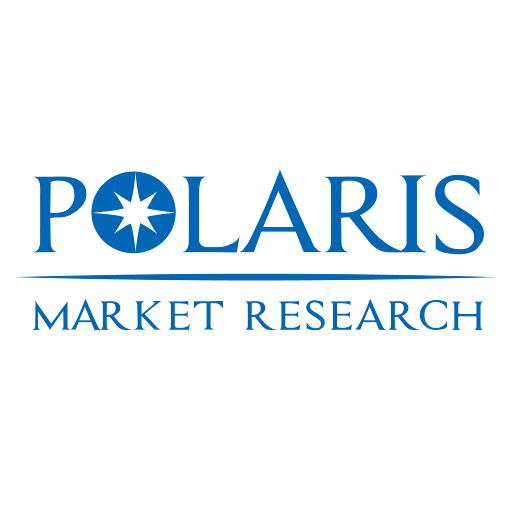Expansion of Managed Care Models and Specialty Pharmacy Services Drives PBM Market Growth

The global pharmacy benefit management market is navigating a period of structural realignment as healthcare systems worldwide intensify their focus on cost containment, medication accessibility, and integrated drug-benefit administration. The global pharmacy benefit management market size was valued at USD 565.07 billion in 2024, growing at a CAGR of 5.5% from 2025 to 2034, underscoring how rising prescription drug utilization and payer-driven efficiency models are reshaping national spending priorities. Within the first layers of this growth narrative, it is evident that regional policies, reimbursement frameworks, and cross-border supply chains are playing increasingly material roles, particularly as governments strengthen oversight on benefit design, formulary management, and controlled distribution channels. The market’s expansion is further supported by heightened emphasis on value-based care and regional manufacturing trends that are improving upstream resilience in pharmaceutical distribution networks.
North America remains the most mature and structurally influential region, driven largely by the United States’ multipayer insurance ecosystem and its reliance on third-party benefit administrators to manage formularies, negotiate rebates, and facilitate integrated delivery solutions. The Centers for Medicare & Medicaid Services (CMS) consistently reports rising prescription drug expenditures as a share of overall healthcare spending, pushing federal and commercial payers toward expanded PBM partnerships to optimize medication utilization. The regional policy environment continues to evolve, with ongoing regulatory scrutiny around transparency, rebate passthrough mechanisms, and pharmacy network contracting. These regulatory shifts, combined with the deep penetration of employer-sponsored plans, position North America as a high-revenue region with strong market penetration strategies focused on data-driven drug management. Additionally, advanced digital health adoption and claims automation strengthen the operating efficiency of PBM platforms, contributing to higher administrative cost savings at the payer level.
Europe’s PBM evolution is more gradual but increasingly consequential, particularly in markets such as the United Kingdom, Germany, and the Netherlands, where national health systems are exploring hybrid models to enhance procurement efficiency. While Europe traditionally relies on centralized drug pricing policies under mechanisms such as the European Medicines Agency (EMA) and national reimbursement agencies, the shift toward outcome-based contracting and therapeutic class management parallels North American trends. Differences in regulatory architecture impact segment pacing across the region, but demand for drug-cost optimization tools is rising as aging populations increase prescription frequency and create pressure on national drug budgets. Cross-border supply chains—spanning major manufacturing corridors in Germany, Ireland, and Belgium—further reinforce Europe’s strategic relevance, especially as resilience and redundancy become central considerations in formulary management.
Asia Pacific is transitioning into one of the fastest-growing regional clusters, supported by demographic expansion, digitization of healthcare services, and rapid growth in insurance coverage across markets such as China, India, Japan, and South Korea. China’s National Healthcare Security Administration (NHSA) continues to expand its centralized drug procurement approach, integrating formulary controls and price negotiations aligned with PBM-like principles. Meanwhile, India is witnessing expansion in private health insurance enrollment, opening new opportunities for pharmacy benefit optimization, adherence monitoring, and chronic disease management. Across Southeast Asia, regulatory modernization and increasing private-sector investment are strengthening the foundation for PBM adoption. These developments underscore a broader regional shift toward value chain optimization in drug delivery, even as variations in policy maturity create uneven adoption rates.
Read More @ https://www.polarismarketresearch.com/industry-analysis/pharmacy-benefit-management-market
Across regions, several core dynamics are shaping global demand. On the drivers side, the acceleration of chronic disease prevalence—highlighted by WHO reports indicating rising global incidence of diabetes, cardiovascular disease, and respiratory disorders—is contributing to higher prescription utilization and increased demand for coordinated drug management solutions. Additionally, digital transformation in claims processing, clinical integration, and real-time benefits verification is enhancing PBM operational efficiency. The industry also benefits from growing demand for specialty drug management, where high-cost biologics and personalized therapies require tightly controlled distribution and prior authorization frameworks.
However, restraining factors persist, particularly related to regulatory oversight and drug pricing reforms. Many regions are intensifying scrutiny around rebate structures, payment transparency, and fair pharmacy reimbursement—issues prominently debated in the U.S. Congress and mirrored in policy dialogues across Europe and Australia. Concerns over vertical integration, consolidation, and the influence of PBMs on drug pricing dynamics continue to shape regulatory considerations. Furthermore, disparities in healthcare infrastructure and insurance penetration limit PBM adoption in developing regions.
Opportunities are emerging from rapid integration of artificial intelligence, predictive analytics, and real-time data systems capable of improving adherence monitoring, fraud mitigation, and population health management. Regions with strong digital health ecosystems—such as the U.S., the U.K., Singapore, and South Korea—are leading innovation in data-driven pharmacy benefit models. Additionally, rising interest in accountable care organizations (ACOs), value-based contracting, and pharmacy-care integration expands the addressable market for PBMs globally. Trends such as regional manufacturing trends, increased data interoperability, and expansion of cross-border supply chains are reinforcing strategic investments in scalable, multi-regional PBM platforms.
The competitive landscape remains concentrated, with top players maintaining substantial market share through large payer contracts, deep integration across insurance networks, and advanced clinical management programs. The industry’s high entry barriers—rooted in complex regulatory requirements, technology infrastructure, and network relationships—continue to strengthen the position of leading companies.
Top Market Players
• CVS Health
• Cigna (Express Scripts)
• UnitedHealth Group (OptumRx)
More Trending Latest Reports By Polaris Market Research:
Neurological Biomarkers Market
Stable Isotope Labeled Compounds Market
Plasma Carbon Structures Market


